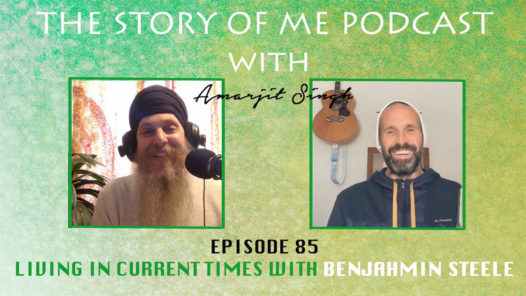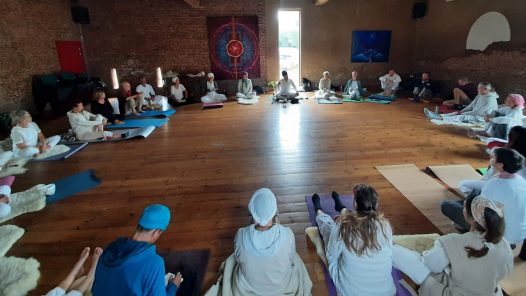In this episode, Amarjit talks about a problem many people experience especially given the current environment this past year. He discusses what the real underlying issue is when it comes to being lazy. How laziness is not a personality trait or condition, but rather a symptom of an underlying problem related to emotional connection. He goes on to give steps on how to overcome being lazy.
Visit thestoryofmepodcast.com for complete show notes, to submit your questions, and a link to the podcast Facebook group.
Support the show with a donation. Go to the podcast website for the donate button: https://www.thestoryofmepodcast.com/contact/
Submit your questions: https://www.thestoryofmepodcast.com/contact/
Amarjit’s Social Media
Facebook: https://www.facebook.com/amarjitsingh810
Instagram: https://www.instagram.com/amarjitsingh8/
Podcast Facebook Group: https://www.facebook.com/groups/thestoryofmepodcast/
Visit our sponsors: https://www.singhflutes.com/
Music courtesy of http://www.aykanna.com/
Why are you lazy?
At times we have difficulty feeling motivated. That drive inside us idles, yet we feel restless. We begin indulging in behaviors to take away our energy: overeating, oversleeping, watching too much television, drugs, etc. Then we begin to feel guilty because we know we should be doing something productive, but don’t feel inspired. Once we fall into the restless comfort of laziness, we feel stuck and self-judgment turns into guilt filling our thoughts.
What is laziness?
We often classify laziness as a condition that some people suffer from. We say it is the result of a lack of motivation. Moreover, many people identify with this quality, condemning themselves as lazy. Once this identification is attributed it becomes an aspect of personality and the true issue goes ignored.
Viewing laziness as a “condition” that results from insufficient motivation is superficial. Furthermore this diagnosis does not correct the problem. How to motivate someone not to be lazy? Typically, when we try to answer this question our first thought is to find proper incentive. Even with ourselves we make deals: if I get off the couch and go to yoga class, I will allow myself to watch TV tonight. Incentive is not the answer. In fact, using incentives creates more problems since it focuses your attention on what is going to happen, not the process. This is an attachment to the result, which is a hindrance to being present.
When trying to understand the self, it is vital to understand that your external world is just a reflection of the internal. With this in mind we can evaluate what is happening with the inner self through this reflection: When we project laziness externally, what is happening internally?
When we feel lazy we don’t feel connected to our environment; we have no interest in looking deeply, we feel like we are on the outside looking in on life. Since your external life is just a reflection of your internal experience this is an indication that you are not connected to the internal self.
This deeper focus exposes the essence of laziness: laziness is not a condition, but only a symptom of a condition. The condition is a separation between you and your inner self that is reflected in the lack of connection between you and your environment.
How to build the internal connection?
Now that we know where laziness stems from, how can we build an internal connection to break the pattern? As stated the condition is an internal distance from the self and laziness is the symptom. Like an illness we can treat the condition and symptom. The following are methods for building a connection with the self.
Connect with your emotions
When we attempt to distance ourselves from what we are feeling we tend to confuse and conflate our emotions. This is the result of several emotions intertwined. Think of it like balls of string that are thrown in a bag together: they get tangled and it takes time to separate them. This is what happens when you try to distance yourself from your emotions – they get tangled. Then confusion occurs; you don’t know what you are feeling. Often this is experienced as just feeling numb.
The first step in recognizing emotions is building the connection to your emotional self through being present. Once you are in the moment you can observe the relationship you are reflecting through your environment; how you react emotionally to each experience.
Building a connection with the self is a process. The emotions are an important tool for self-awareness. Emotions should not dictate your behavior, but they should focus your attention. Create awareness of the influence of emotions in your life. Ask yourself: When I feel this emotion, what is it causing me to do or not do? Then investigate why it is resulting in a desire for the particular behavior.
Be present
One of the most important and effective methods for being present is to consciously breathe. When you concentrate on each aspect of the breathing process you are present; you let go of the past and future and are focused on the moment inside the breath. This is why breathing consciously is its own meditation.
Express yourself
Do something creative: cook, draw, write, paint, sing, etc. Self-expression is self-reflection manifested. Creativity is the process of expressing what is happening internally: you relate what is happening with you through exposition of feelings. As you continue down this path of self-expression, you can reflect on how your creative expression makes you feel. This relationship continues to get deeper as you create an awareness of unconscious tendencies that are reflected back to you. The removal of inaccurate perceptions allows a better understanding of the self, and a deeper connection to your creative expression.
Get physical
Do some form of exercise to connect physically. Of course yoga is best for this, but there are numerous activities that you can do.
Physical activities create body awareness. Being conscious of physical blocks provides an opportunity to go deeper. These blocks are physical manifestations of emotional resistance. If you have been to a yoga class you have probably heard someone crying, or maybe that was you. This is the result of releasing emotions that were held in the physical body. When we stimulate areas of the body through asanas we open up the channels so that the prana flows better. If there is emotion held in a particular region it means that the prana is not flowing freely in this area. Then when we stimulate the body through asanas we open the channels allowing the prana to flow better, releasing emotion. Physical awareness is an excellent tool for creating emotional awareness, and connecting to your environment.
Live healthy
When we get into a lazy state we find ways to take our energy away to allow the physical state to match the mental. We engage in behaviors such as overeating, oversleeping, watching too much television, drugs, etc. Having a healthy body motivates us to embrace life. Vitality stimulates movement. Eat healthy, live in moderation, and don’t overindulge. Live a balanced life.
When we think of lazy, we think of someone who doesn’t want to do anything. But it’s not that the lazy person doesn’t want to do anything, he just doesn’t know what he wants and doesn’t feel pulled toward anything strong enough to maintain consistent activity. When you are going through a period of laziness remember to look inward. Understanding that laziness is not a condition, but rather a symptom of a condition is important for changing the behavior. Laziness comes from an insufficient emotional, mental, and physical connection to your environment. Meaning a lack of connection between you and your emotional, mental, and physical self. When you are connected, you are awake; you are attentive and enthralled. Your consciousness is stirred; you are captivated, and motivated. You are active!







